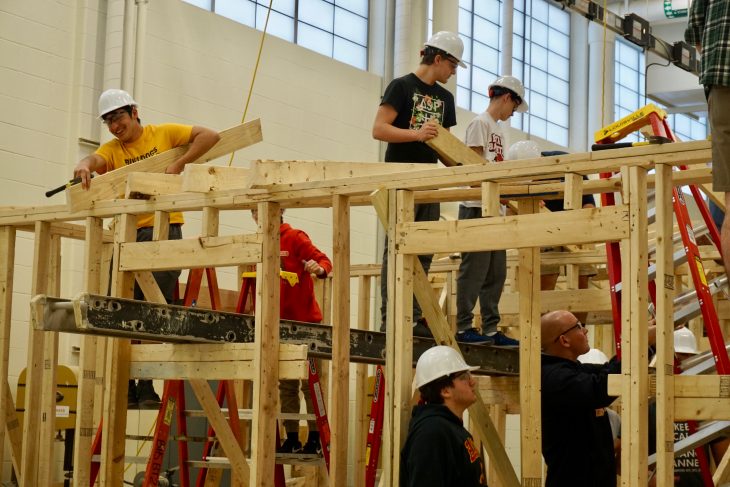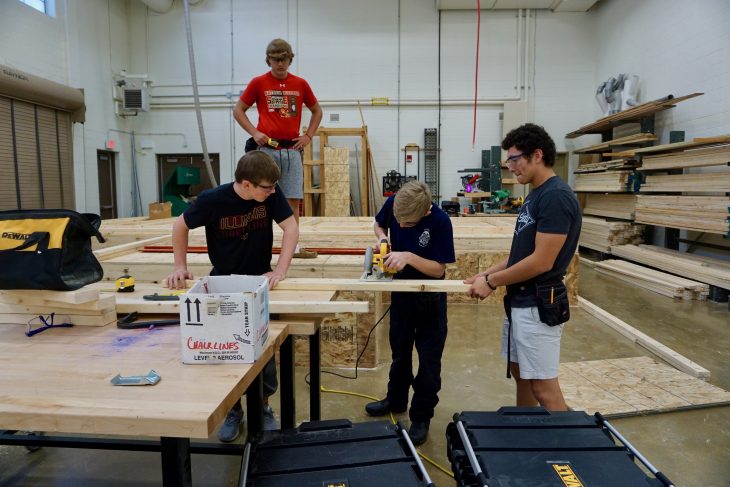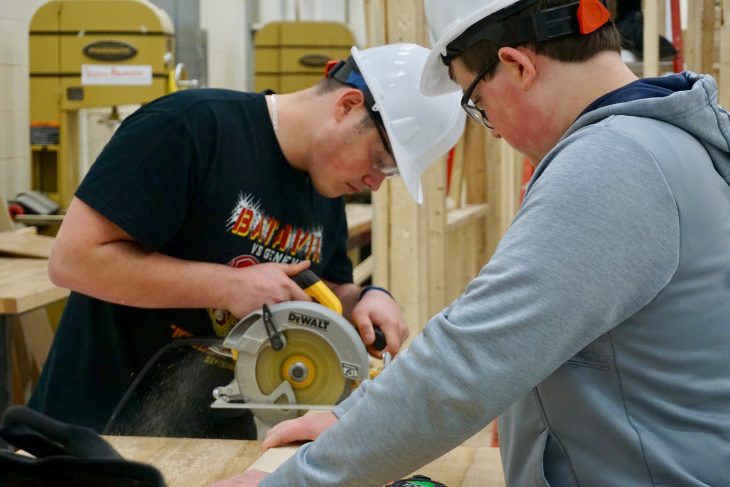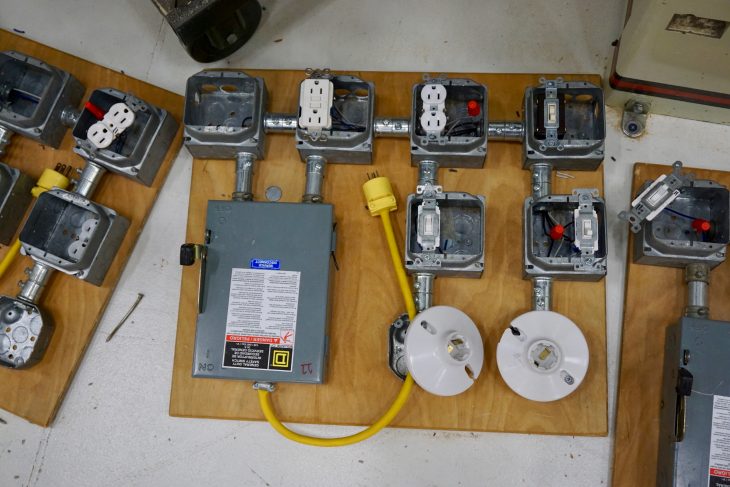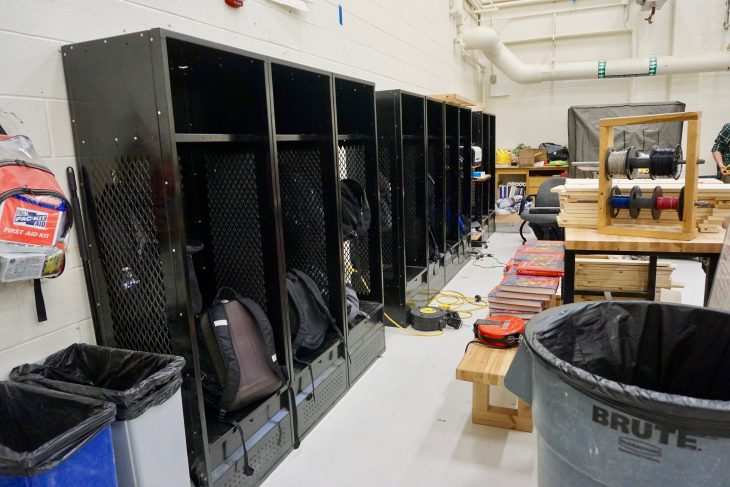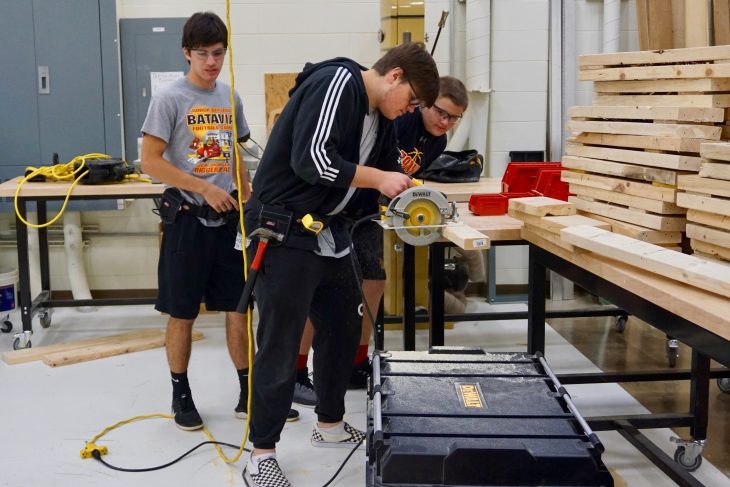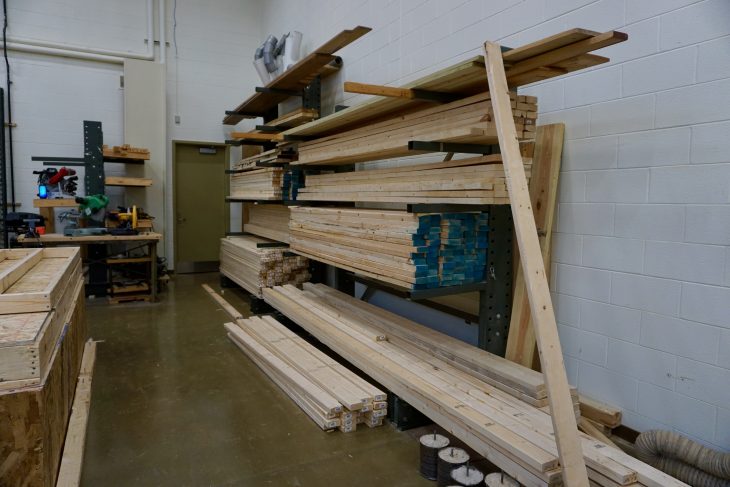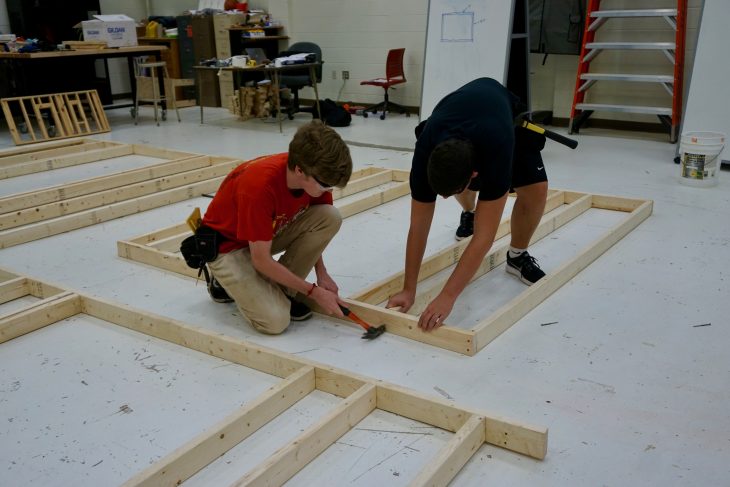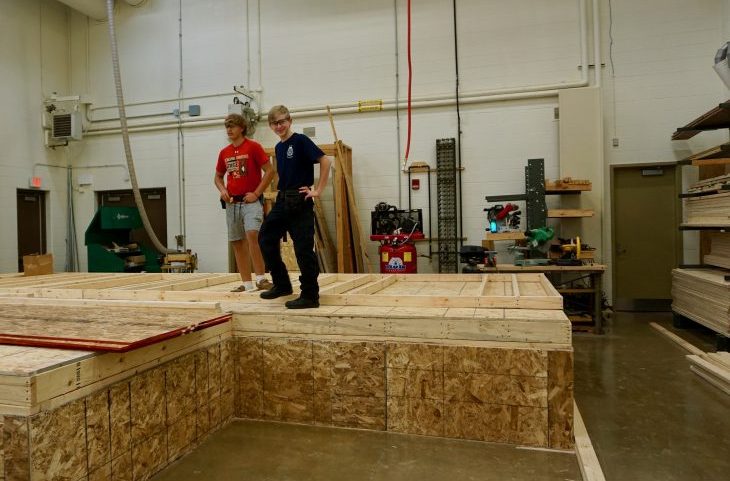Building a Strong Foundation at Batavia High School
Walk by room F111 at Batavia High School, and you’ll likely see students on top of rafters framing a roof, on the floor constructing a wall, at a workbench sawing planks for a door frame, or wiring an electrical outlet.
These students are part of the Building Trades program, which includes two courses, Building Trades I and II.
In Building Trades I, students in grades 9 through 12 focus on drawing and reading blueprints and diagrams for basic construction, framing sections of walls, floors, and rafters, along with a basic introduction to electrical wiring. The course culminates in the construction of a small-scale structure in teams.
In Building Trades II, which is a revamped class this school year, students extend upon the skills and experiences they had in Building Trades I. Students construct a small-scale building while focusing on drawing and reading blueprints and diagrams, framing, roofing, window and siding installation, electrical work, plumbing systems, insulation and drywall installation, painting, flooring, trim work, and finishing.
The goal of both courses is to offer students an introduction to the numerous career opportunities and skills required in the construction trades.
“Bronco Meeks [Building Trades I and II instructor] and I visited the formal training centers of local electrical, plumbing, and carpentry unions to understand the training that their apprentices go through. We used that information to build our own curriculum in order to give students an authentic experience,” said Brian Gamlin, Batavia High School assistant principal. “The circuit board training, for example, that we do in Building Trades I is the same type of training apprentices receive at the local IBEW union.”
The goals of students in the Building Trades program differ.
“I want to be a civil engineer,” said BHS senior Andy Posledni. “I took Building Trades I and II to get hand-on experience with construction. I also work in construction during the summers for Shodeen, so these courses have been valuable.”
BHS senior Nick Rentas said his plan is to go to Waubonsee to earn an associate’s degree and then either go on to earn an electrical engineering degree or go straight into an apprenticeship program with a local electrical union.
“In the last few weeks of Building Trades I, we got into electrical work. I really enjoyed it. During class, we also researched educational requirements for the various trades and learned that many careers in the trades benefit from a two-year degree. This helped me a lot with my own decisions.”
Skilled Labor Forecast
In Feb. 2016, Marianne Cusato, housing expert and associate professor at University of Notre Dame’s School of Architecture, published “The Skilled Labor Shortage: Where is the Next Generation of Craftsmen?”
In her report, she states, “The United States is facing an unprecedented skilled labor shortage that comes with serious implications: Older generations of craftsmen are aging out of the workforce, while younger generations are slow to enter in their place. The resulting labor gap is curtailing building projects, contributing to rising housing costs, and slowing local and national economic growth. Unaddressed, it’s a problem that only stands to worsen.”
Included in the report is a key finding from a survey of skilled professionals conducted by HomeAdvisor: “Negative perceptions and a lack of industry exposure may be keeping new entrants—Millennials, in particular—from pursuing skilled labor jobs. In fact, 61 percent of respondents agree that there is a lack of exposure to professions in the skilled labor field for younger generations.”
“The BHS Building Trades program is addressing the shortage of skilled labor entering the U.S. construction market,” said Mr. Gamlin. “We really are going after the skills gap and helping to train students for the jobs of tomorrow.”
What’s Next at BHS?
Looking ahead, Mr. Meeks and Mr. Gamlin are looking to get tradespeople, such as a Pella window installer or a Therma-Tru door installer, into the classroom so that students receive training on how to install products from an expert.
Mr. Meeks and Mr. Gamlin also want to launch small-scale building competitions at the end of the Building Trades I and II courses to give students a platform to showcase what they learned and test their skills against their peers.
“We’re looking to build a model similar to our BHS INCubator Entrepreneurial Program, which culminates in a Pitch Night,” said Mr. Gamlin. “It will require funding, materials, expert coaches, sponsors, judges, and a local advisory group, just like the INCubator program, so we are working on developing that structure.”
The competitions would not only be great practice for students, but also strengthen their employability by giving students experience-based talking points for prospective employers, universities, and trade schools.
For more information about the Building Trades Program, including sponsorship, coaching, or advisory opportunities, contact Brian Gamlin and follow along on Twitter at @BHS_Build.



